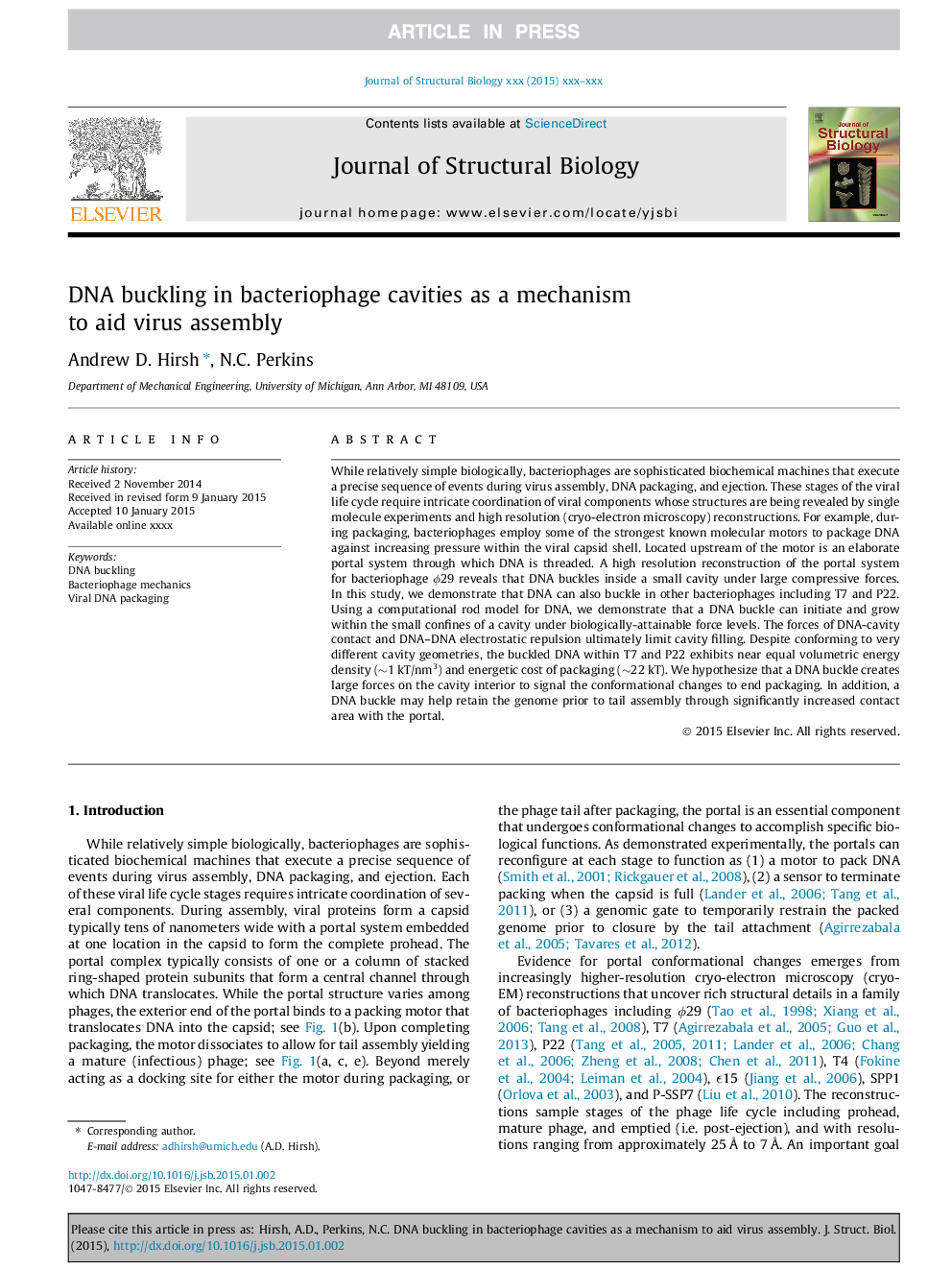| Article ID | Journal | Published Year | Pages | File Type |
|---|---|---|---|---|
| 5913997 | Journal of Structural Biology | 2015 | 8 Pages |
Abstract
While relatively simple biologically, bacteriophages are sophisticated biochemical machines that execute a precise sequence of events during virus assembly, DNA packaging, and ejection. These stages of the viral life cycle require intricate coordination of viral components whose structures are being revealed by single molecule experiments and high resolution (cryo-electron microscopy) reconstructions. For example, during packaging, bacteriophages employ some of the strongest known molecular motors to package DNA against increasing pressure within the viral capsid shell. Located upstream of the motor is an elaborate portal system through which DNA is threaded. A high resolution reconstruction of the portal system for bacteriophage Ï29 reveals that DNA buckles inside a small cavity under large compressive forces. In this study, we demonstrate that DNA can also buckle in other bacteriophages including T7 and P22. Using a computational rod model for DNA, we demonstrate that a DNA buckle can initiate and grow within the small confines of a cavity under biologically-attainable force levels. The forces of DNA-cavity contact and DNA-DNA electrostatic repulsion ultimately limit cavity filling. Despite conforming to very different cavity geometries, the buckled DNA within T7 and P22 exhibits near equal volumetric energy density (â¼1Â kT/nm3) and energetic cost of packaging (â¼22Â kT). We hypothesize that a DNA buckle creates large forces on the cavity interior to signal the conformational changes to end packaging. In addition, a DNA buckle may help retain the genome prior to tail assembly through significantly increased contact area with the portal.
Keywords
Related Topics
Life Sciences
Biochemistry, Genetics and Molecular Biology
Molecular Biology
Authors
Andrew D. Hirsh, N.C. Perkins,
